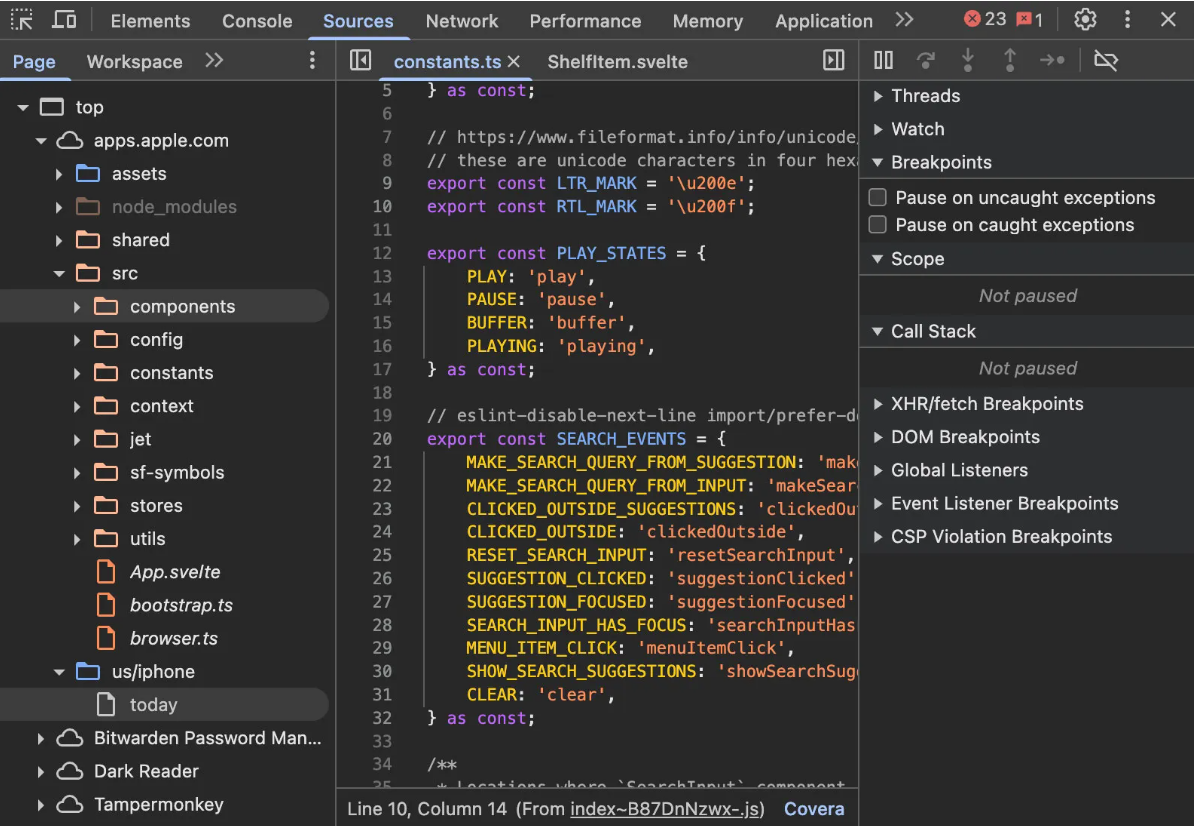- Apple accidentally (maybe not) exposed its entire App Store front-end structure
- Leak shows Svelte and TypeScript designs for Apple’s interface design
- Rxliuli recovered everything using browser tools without bypassing security systems
Apple recently launched its redesigned web App Store, which the company says offers a more consistent layout, clearer platform pages, and an updated search experience.
However, the debut was overshadowed by an unexpected oversight involving the public release of the site’s entire front-end code.
According to Rxliuli, who posted the code on GitHub, Apple implemented the interface with live source maps, allowing the internal structure of the project to be retrieved directly from the live site.
How the material was extracted and why it is important

Such a large error is unusual for a company that typically maintains tight control over its development workflow.
While this could be a “bug” by Apple, some think it is a deliberate leak, since disabling such material in production is considered a basic step in modern web engineering.
The files came entirely from the browser environment, with no breaches, intrusions or bypasses of a firewall.
They were saved using standard browser tools and a Chrome extension, and the GitHub repository exists only for “educational and research purposes.”
From a security perspective, the impact appears limited because the material contains presentation logic rather than sensitive data or server-side logic.
Still, observers point out that a company operating on Apple’s scale rarely exposes its internal code structure in such a direct way.
It almost seems as if Apple left the code there for someone to find and make public.
The repository includes Svelte and TypeScript code, routing details, UI design structure, and the state management approach for the new interface.
This gives anyone interested in front-end workflows or broader engineering patterns a temporary view of how a major company structures a large web interface.
The code shows general design logic, but does not reveal hidden features or proprietary algorithms, so claims that it exposes sensitive technology seem exaggerated.
Rxliuli notes that the code comes from publicly accessible resources, but it’s hard to imagine Apple allowing it to remain online without challenges.
The company typically responds quickly when internal material appears in public spaces, and the visibility of the repository may be limited once legal requests begin.
For now, those curious about the architecture of the revamped App Store interface or the workflow behind Apple’s latest web project can examine it, although its presence may be temporary.
Through 9to5mac
Follow TechRadar on Google News and add us as a preferred source to receive news, reviews and opinions from our experts in your feeds. Be sure to click the Follow button!
And of course you can also follow TechRadar on TikTok for news, reviews, unboxings in video form and receive regular updates from us on WhatsApp also.



